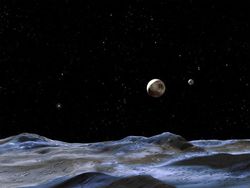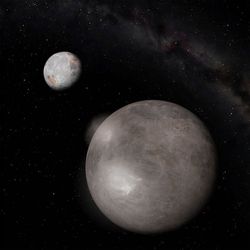IAU (International Astronomical Union) finally once again ruled in favor of names associated with the Greek and Roman mythology and chose the names of Kerberos (Cerberus) and Styx (one of the rivers of Hell) for Seniors P4 and P5 of Pluto.
 Fans Star Trek angry.
Fans Star Trek angry.
union had let users submit names for these two satellites before submitting the vote. Unfortunately for fans of Star Trek much of which had lobbied to impose the name of Vulcan, the name has not been chosen.
500,000 votes, more than 170,000 votes were yet to Vulcan. Actor William Shatner, who played Captain Kirk in the original Star Trek TV series itself had suggested the name of Vulcan, precipitating the vote of fans of the series.
IAU would have avoided the Vulcan name because it was already used in astronomy, and because the Roman god which he refers is not clearly associated with Pluto. The union had specified that it was the Roman mythological characters names directly related to Pluto, the god of the underworld.
 tiny moons across the dwarf planet.
tiny moons across the dwarf planet. two moons were discovered by the Hubble Space Telescope a few years ago already. Kerberos was discovered in 2011 and Styx in 2012.
Eachmoons does not measure more than 20 to 30 km in diameter. Currently, five moons are officially recognized as orbiting Pluto. Charon, the largest, was discovered for the first time in 1978, two others, Nix and Hydra were discovered in 2005 by Hubble again. In 2006, the IAU had downgraded Pluto and determined that it no longer deserved the name of planet, but the dwarf planet because its diameter is only 2300 km, well below some moons of our solar system.
src=”http://img2.generation-nt.com/new-horizons_00FA000001432992.jpg” Other moons discovered in 2015
NASA should study a little deeper into the moons of Pluto in 2015 when the New Horizons probe launched January 19, 2006 will come close to Pluto and Charon.
The probe should then consider other celestial bodies located in the Kuiper Belt, a region of asteroids and ice is debris from the formation of our solar system.
No comments:
Post a Comment